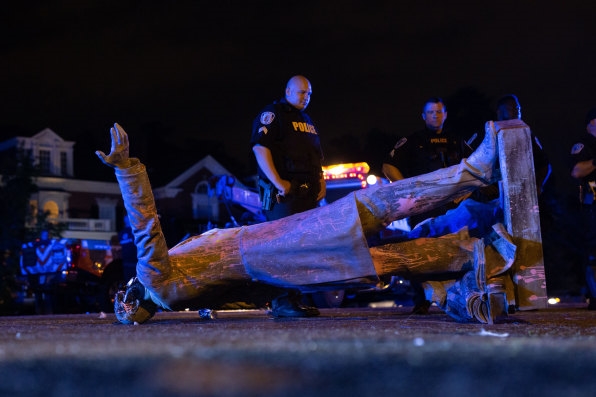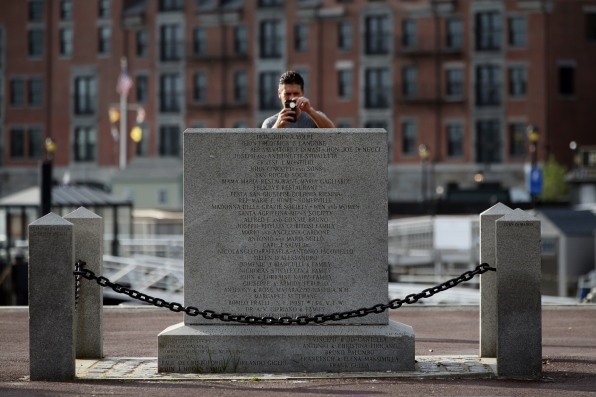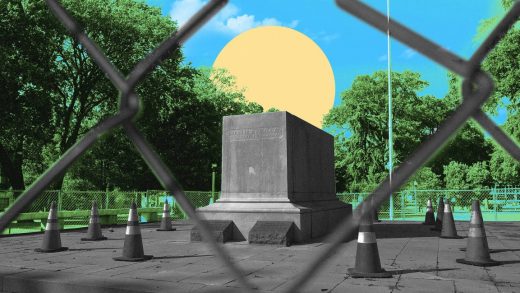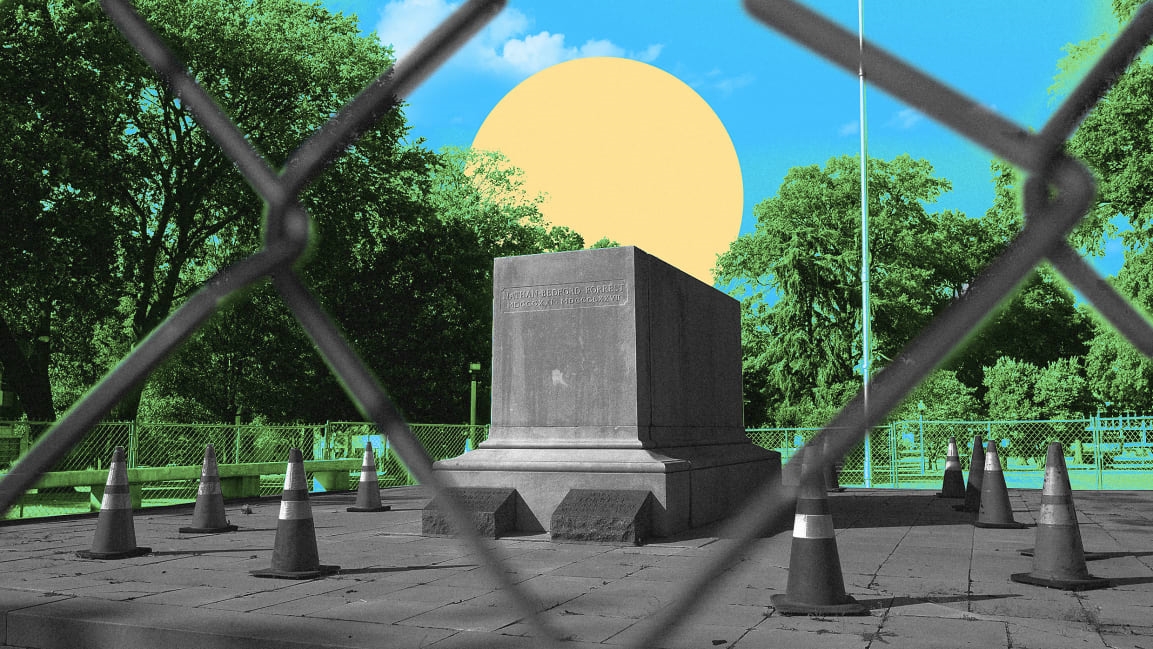Racist monuments are coming down all over the U.S. What should replace them?
Protests against police brutality in the United States have thrown the spotlight on another aspect of systemic racism in America: More than 1,700 Confederate monuments remain standing today. But activists are fighting back. So far, over 25 monuments have been taken down by protesters since the killing of George Floyd, including statues of 17th-century slave trader Edward Colston and Confederate President Jefferson Davis. As more monuments come down, many are asking what the fallen monuments should be replaced with.
We reached out to four experts who have all championed inclusivity in their work—author and historian Keisha N. Blain, artist Mary Valverde, and architects Zena Howard and Deanna Van Buren—to share ideas for turning these empty spaces into opportunities for reflection and community building.

They should be immersive installations that evolve over time
“I’m not into sculptural things being plopped into things. I call it ‘plop art.’ But I think [we need to] create an immersive installation that is both permanent and changeable that allows us to represent all the perspectives and stories of that time. So how can we create a very rich experience that people can connect with as human beings, and be honest? The ritual part is important because in the creation of the thing we need to do it together in a new kind of way. And they need to be in places where people can come to it to grieve [and] to share stories. We need to support dialogue.
“So it’s more than just putting a piece of stone in a plaza. It needs to be more immersive and dynamic, and I think we can do that. I imagined these new sort of [memorials] called memory forests in every neighborhood and in every city. It just becomes a ubiquitous piece of our landscape, and they look different in different places because they’ll be cocreated with the community. This is something that we can do together. The creation of the monument itself is the healing process for us.” —Deanna Van Buren, cofounder and design director of Designing Justice+Designing Spaces, a nonprofit architecture and real estate development firm
They should represent the community
“In New York [where I live and work] . . . we have ample universities and focused studies in art history, architecture, Africana studies, Latinx studies, Indigenous studies. In all the universities in New York, there’s no reason why we cannot access the people who understand and know. And we can offer resources and information about how we can be critical in voicing and presenting and creating art that is diverse, thoughtful, and historically accurate. That would be beneficial to all the community.” —Mary A. Valverde, interdisciplinary artist, professor, and writer

They should honor the real American heroes
“My sense is that these monuments can be or should be replaced by figures who we generally recognize as heroes, as people who have significantly helped move this country forward. And I surely don’t think the Confederate soldiers or leaders of the Confederacy are the ones who represent the kind of vision, certainly not the democratic ideals, of the United States. The kinds of people who come to mind are people like Harriet Tubman who actually helped in the U.S. military, even as a Black woman could not necessarily be on the front lines but served as a spy in the Civil War.
“Or even later we could identify someone like Martin Luther King Jr. We could look to someone like Fannie Lou Hamer, a civil rights activist who played a key role in expanding voting rights for Black people. This list goes on and on. We could lift up individuals who have done remarkable things to help uphold the ideals of democracy in this country. Confederate monuments . . . represent a moment in our nation’s past which, quite frankly, is an embarrassing moment and not a moment we should be celebrating.” —Keisha N. Blain, historian and writer with specializations in African American history and women’s and gender studies
They should pay tribute to everyday people
“Our democracy is trending away from sort of the single icon or ‘shero’—a personality that represents all of our values. We’re diverse. [The monuments] should be replaced with a concept that represents the contributions and extraordinary efforts of everyday people. And even if you look back throughout history, although we have generated some individual people, really when you study the history there was just this strong collective of individuals and everyday people who were the power behind the iconic figures that we have chosen to represent. And many of these people remain unnamed [and] faceless.
“People share values, emotions, and experience around things that they can collectively identify with. So the problem with the current monuments that we have is that you’ve got people who have to be faced, obviously, with monuments that were completely opposite [of their values]. These people were murderers or killers. Then, on the other hand, you have people who venerated them as great fathers and parents and heroes. So there’s this duplicity that we struggle with. I think [we need to have] monuments in communities that people can access [through] shared values and stories, and they understand and rally around regardless of your differences.” —Zena Howard, principal and managing director at Perkins+Will architecture firm
(42)



